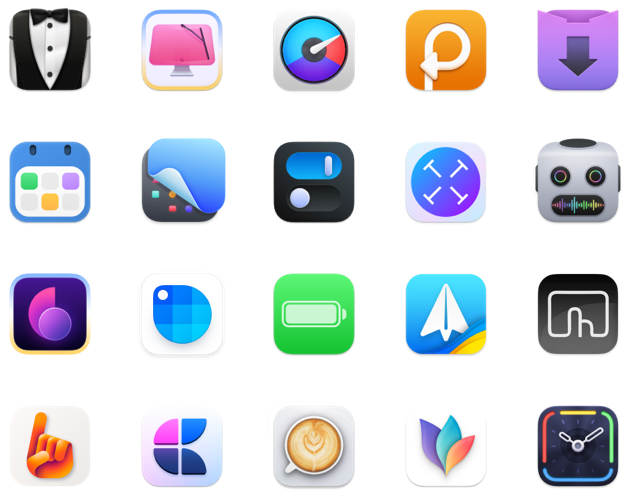GIMP for Mac: Review, and Best Alternatives
GIMP, a popular photo editor for Windows and Linux, is also available for the Mac! In 2012, GIMP was made available to the Mac platform as a standalone app. Here, we’ll dive into GIMP’s features, and discuss some alternatives.
While our cameras take great photos, they sometimes need fine-tuning. That’s where great photo editing software comes into play. Maybe the background blur isn’t quite what you were looking for, or you want to enhance the colors in a photo before sharing to social media.
But is GIMP a great photo editor? Is its feature-set really the best available for Mac users? Let’s dive right in.
What is GIMP?
GIMP stands for “GNU Image Manipulation Platform,” which highlights its origins as a Linux app. While Linux as a desktop operating system is typically left wanting for high-profile photo tools, the GIMP editor stands out as one of the best options for that platform.
GIMP for Mac is also popular! An open-source app, the GIMP photo editing software has a robust toolkit. You can edit the color and tone of photos, but also add filters. You can use GIMP for Mac to create original artwork, and as a tool for graphic design. One of GIMP’s main draws is its extensibility; you can use it with apps like Scribus, Inkscape, and SwatchBooker, or programmatically alter images using languages like Python, C, C++, Perl, and Scheme.
How to Download GIMP for Mac
Downloading GIMP is simple. First, head to the GIMP homepage. At the top of the screen, you’ll see ‘download’ on the menu bar, which is the direct link for the GIMP download for Mac (or GIMP OSX, if you’re on a legacy version of macOS); the word ‘download’ should also appear on the banner image up top, alongside the most recent version of GIMP on Mac.
Clicking either download button will take you to a new screen. Here, you can select a GIMP download from two sources: BitTorrent, or direct. Either option is fine.
Once the file is finished downloading to your Mac, head to your download folder and double-click the file named gimp-(file version)-x86_64.dmg. (The file version identifier is unique to each new version, but will look something like “2.10.14”.)
Once the file is opened and the download is complete, a new window named “GIMP 2.0 Install” will open. You’ll see an icon for the GIMP photo editor, and an arrow to an Applications folder. This is asking you to add GIMP to your list of Applications. Simply drag the GIMP icon to the Applications folder to do so.
GIMP Photo Editing Software: Key features for Mac users
Most will use GIMP as a photo editor, and the GIMP app is great for this purpose – so we’ll focus on that here. To open an image for editing in GIMP, got to File > Open in the menu bar when the GIMP app is open.
Find the file you want to edit (we suggest adding the images you want to edit to your desktop to make finding them simpler), and select “open” on the bottom right. Your image will open in the main GIMP window, ready for editing.
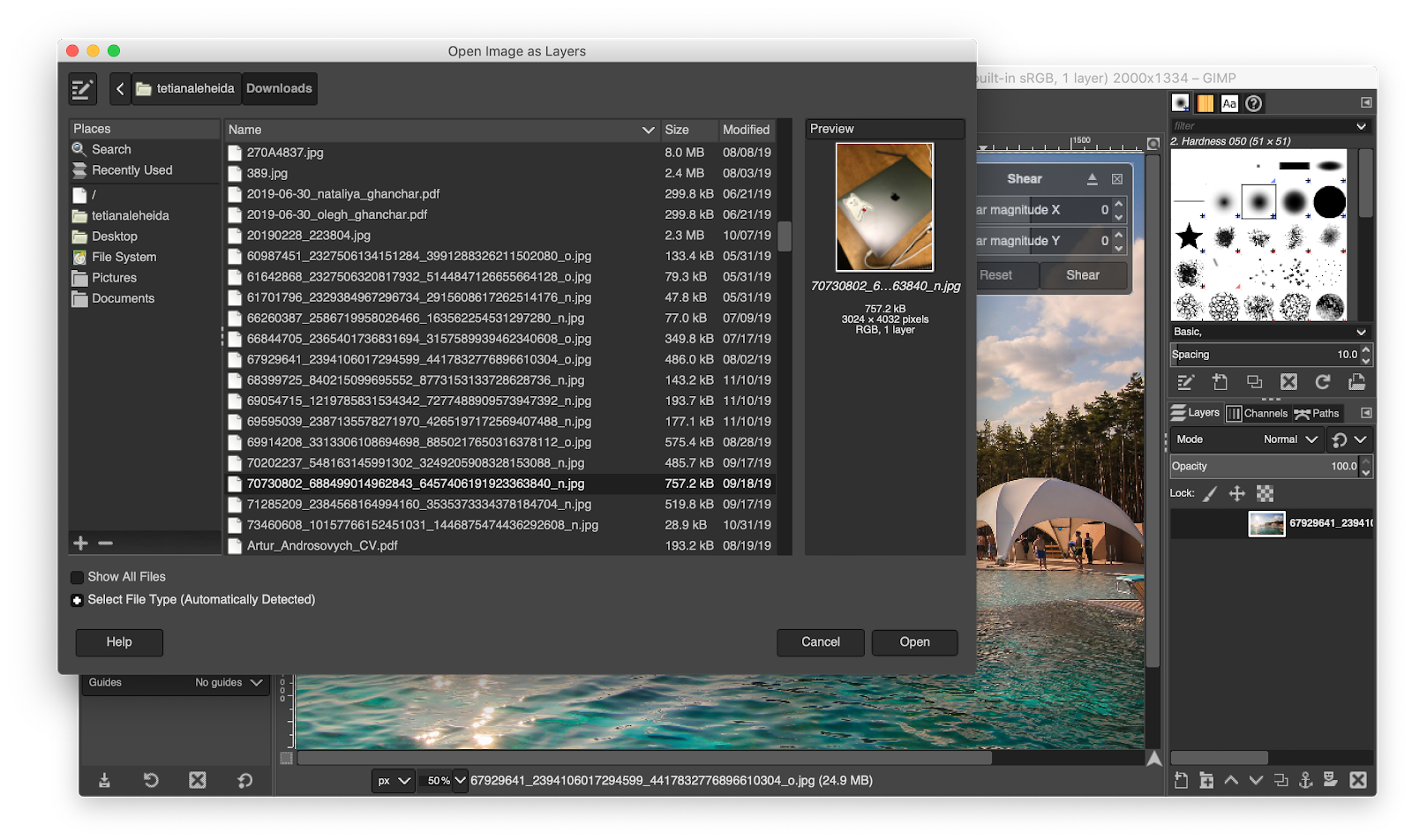
On the left side of the window, you’ll see various icons for things like adding blocks of text, or cropping the image. You can also draw or paint on your image. Below the icons, you’ll see options that change with the tool you have selected. Here you can do things like change the cropping size you want to use (handy if you’re trying to crop images for use on the web, or for social media), and fine-tune tools like the brush (it allows you to change the size and opacity of the brush head).
On the right side of the screen, you’ll see a “Mode” menu, where you can do things like edit the shading and color of an image. This is also where you’ll find a list of the layers you have for your image, which can be hidden or edited independently of one another.
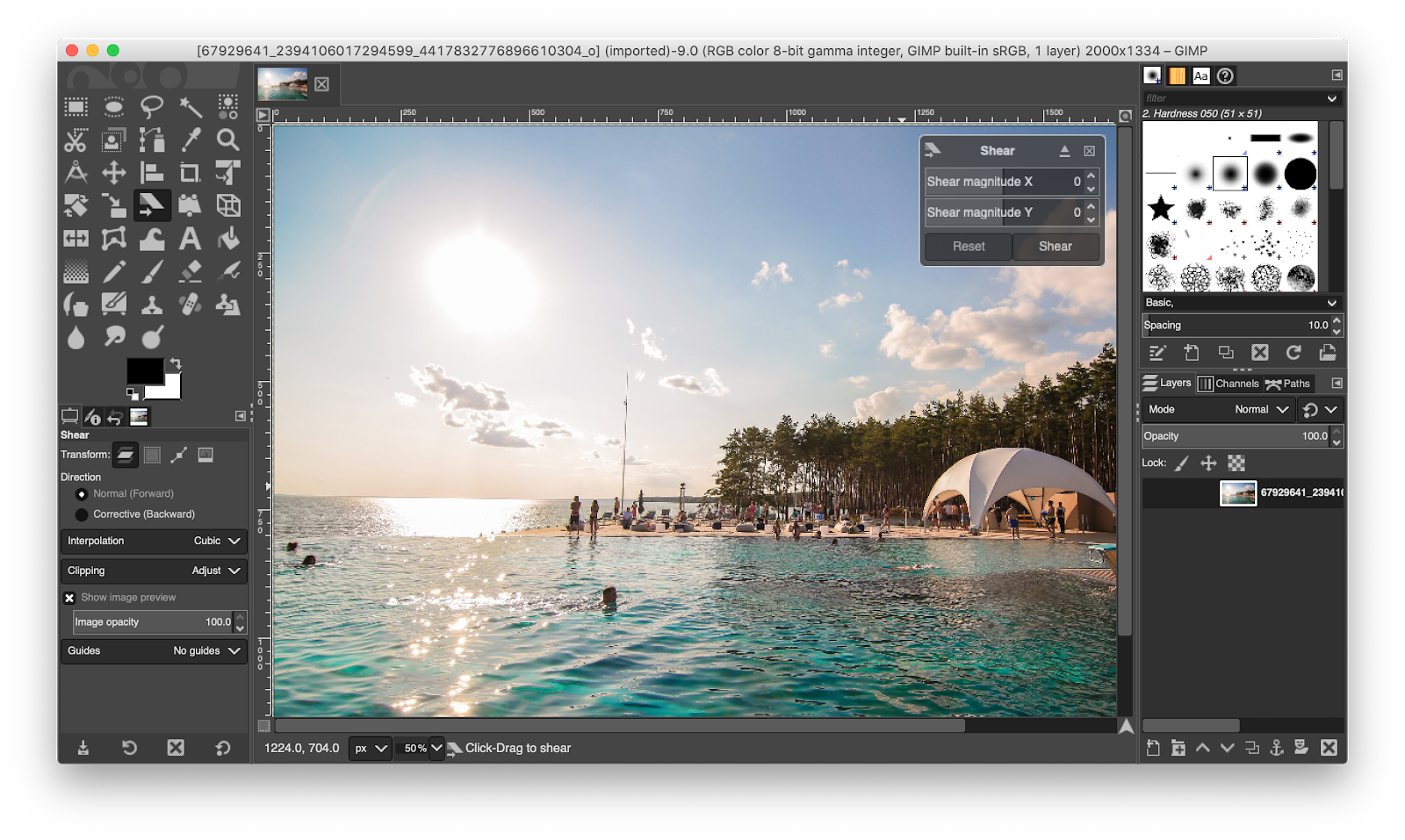
GIMP on Mac is a powerful tool, but it’s a bit clumsy. Some may find its interface too difficult to master. One major feature of any photo editor is filters, and GIMP has them – but they’re buried int he menu up top. While “Filters” having a spot on the menu bar is great, it’s far different from other apps, and the granular options for altering those filters is not straightforward. You simply have to tinker with the filters a bit to find the effect you’re looking for.
Meet advanced GIMP software alternatives for Mac
If the GIMP app doesn’t sound like your cop of tea, there’s nothing to worry about. Though powerful, the app leaves many people looking for something more suitable to their needs.
This is when you should really consider what your needs are. It’s also where you should consider that you may not know what you even want! It’s okay – we’ve got you covered.
Luminar for AI enhancements
Luminar is an AI-powered photo editing app for your Mac. It can take care of your photo’s imperfections, add oomph, as well as make minor adjustments to fix any contrast, exposure, or detail issues.
The app offers a collection of AI tools for photo editing, ranging from portrait correction to sky augmentation and even replacement. If the blue sky in your pictures isn’t as brilliant as you’d like (or remember), no sweat – Luminar can help enhance the sky for moody, inspiring shots.
Luminar’s kit also includes a handy Denoise tool. It can be super helpful in dealing with the noise in poorly lit or lower quality images.
Not sure what edits will make your photo better? Try Luminar’s collection of built-in looks to enhance your photos. You can adjust the look settings to fit your image and your taste, so don’t worry about being trapped in rigid standard presets. What’s more, you can save your own edits as user looks and then apply them to other images in your collection. This can help cut your editing time, especially if you are dealing with numerous similar images of the same or alike subjects that were shot in identical lighting conditions.
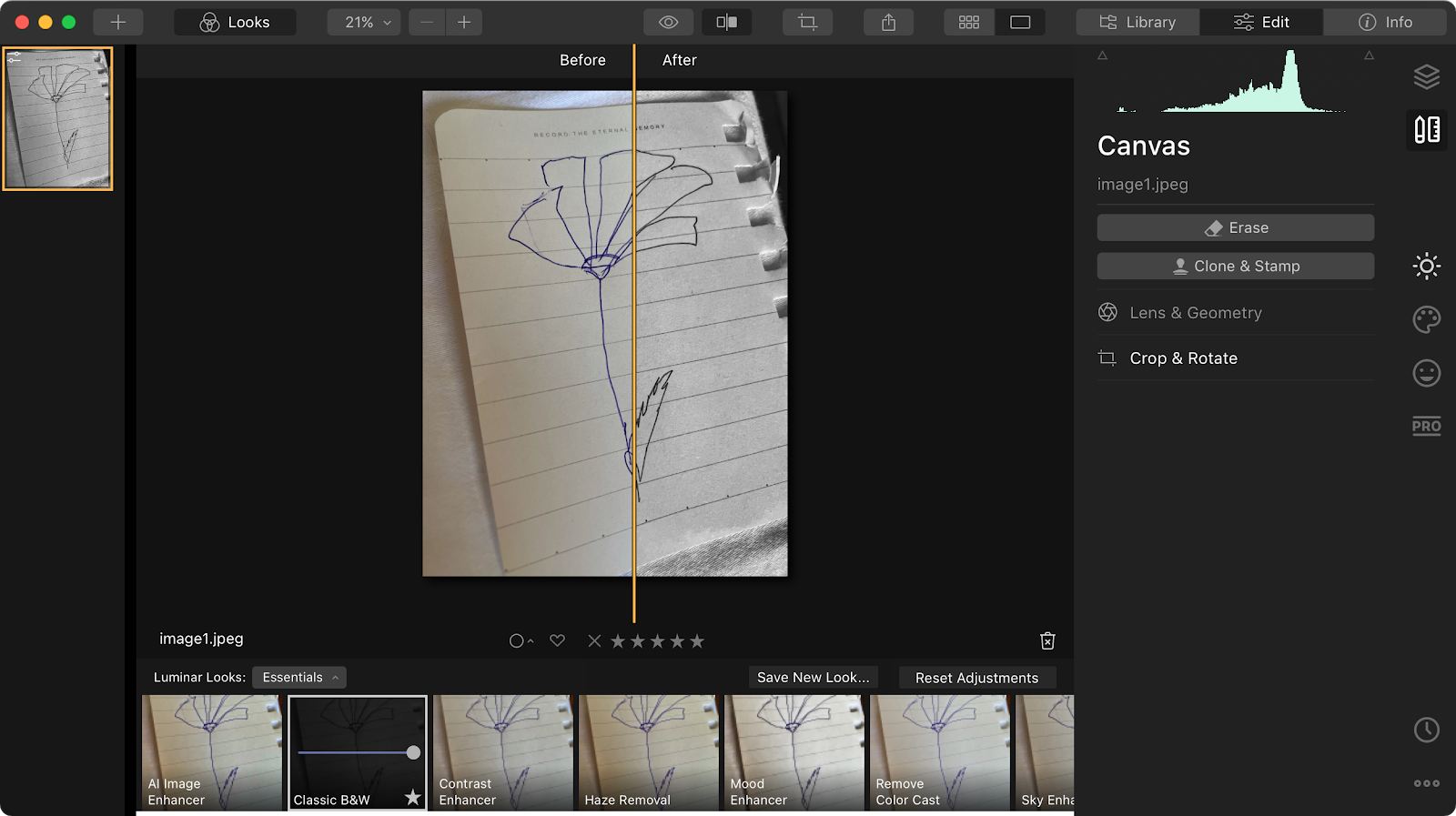
Speaking of subjects, Luminar’s AI toolkit also includes a built-in portrait enhancer. This tool can help remove dark circles, enhance lip color, whiten eyes and teeth, fix up eyebrows, and add more tweaks to creatively edit portrait shots. Use AI Skin Enhancer to remove shine or address skin imperfections in your portrait images.
AI Structure and AI Enhance can help automate small corrections in your images. AI Structure detects separate areas of an image that can be improved and makes changes just there. AI Enhance analyzes the image and adjusts a selection of controls, like shadows, highlights, contrast, tone, saturation, exposure, and more. All the routine adjustments you most likely do to your images anyway. Now you can leave all of this to AI.
Some of the other tools in Luminar’s kit include Erase tool, Detail Enhancer, Landscape Enhancer, and Smart Contrast.
You can use Luminar to edit your images both as a standalone app and as a plugin for Photoshop, Lightroom, Elements, and macOS built-in Photos app.
CameraBag Pro for the best photo filters
If filters are your thing, then CameraBag Pro should be your go-to app for photo editing.
CameraBag Pro has more filters than you probably know what to do with – and that’s a good thing. Rather than lean on AI or self-guided controls, CameraBag Pro hosts its image editing as filters.
The great part about this is it makes photo editing simpler; instead of fiddling with white-balance or shadows from the start, you simply scroll through a series of filters until your image looks right. If you like what you see, just use the filter!
And if you’re in-between filters for your image, CameraBag Pro lets you fiddle with the finer points, too. Things like exposure, contrast, and saturation can all be controlled within filters. It’s great for those times when you just need to adjust one small aspect of a filter to get the absolute best image possible.
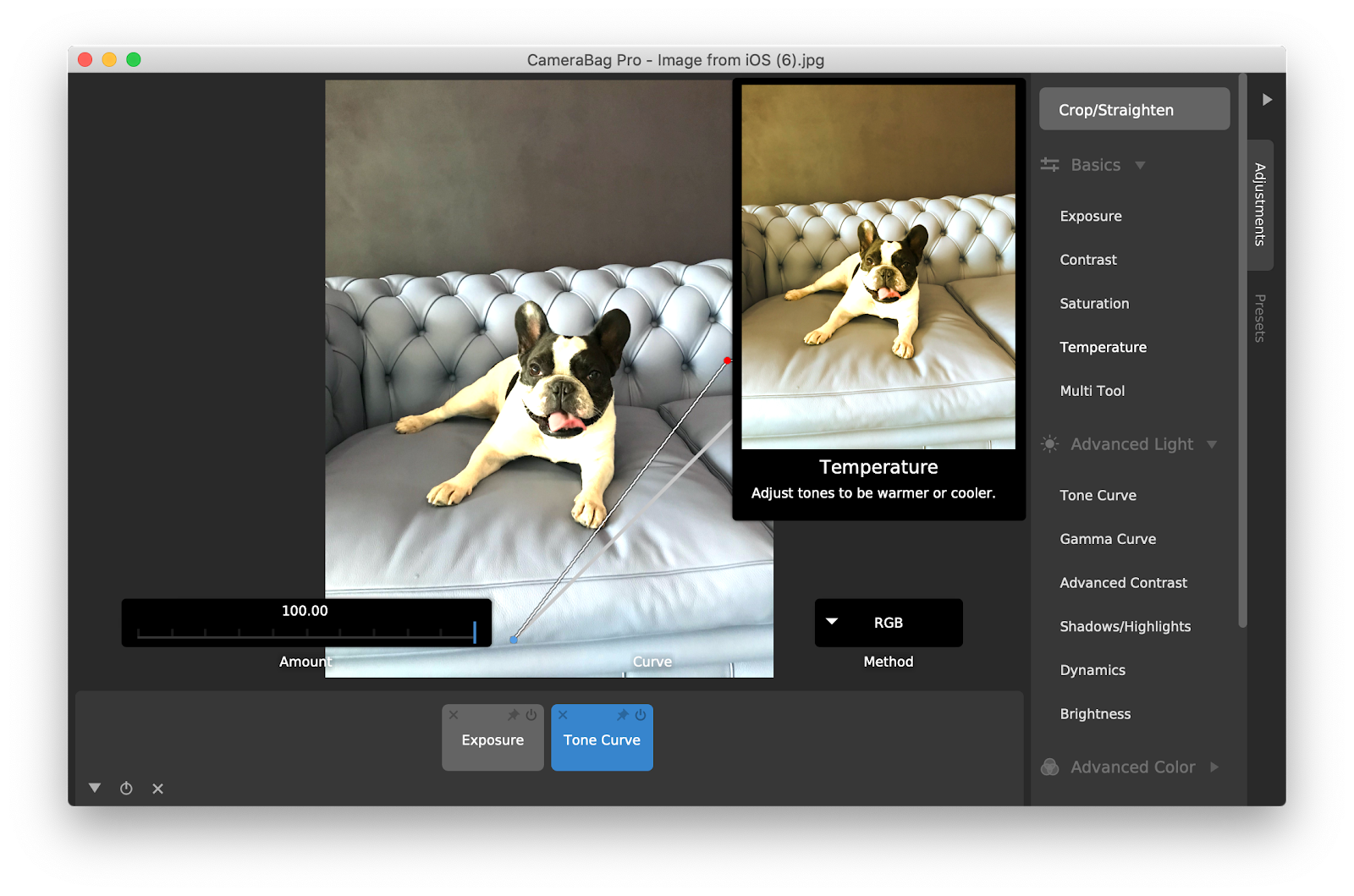
And the coolest thing about CameraBag Pro’s filters is many of them are meant to mimic old-school film photographs. While Instagram made its name styling images after a polaroid, CameraBag Pro takes it to the next level with filters meant to mimic old Kodak, Fuji, and other manufacturer’s cameras. It’s the best way to make an image of something old look like it was from the same era.
Choosing the best photo editor for Mac
While GIMP for Mac is an excellent and robust photo editing app, Mac users will probably enjoy the powerful-yet-stylish Luminar as a replacement. It’s a lot easier to use, and just plain has a better interface.
If you don’t need or want the fine-tuning photo editing software as your primary option, CameraBag Pro is a great choice. We really like that you can choose to edit aspects of a filter, and dismiss those edits if you decide against having them included in your final version..
Of all the options discussed here, keep in mind only the photo editing GIMP workflow allows for creating images from scratch. If you’re looking for a photo editor that also allows you to create original artwork, GIMP is worth a look – but that’s a very small audience.
For pure, performant, engaging photo editing, any of the three GIMP alternatives mentioned here are great options. Best of all, both CameraBag Pro and Luminar are available as part of Setapp’s 7-day free trial period. In that week, you can give each of these apps a whirl to find out which is best for your needs.






